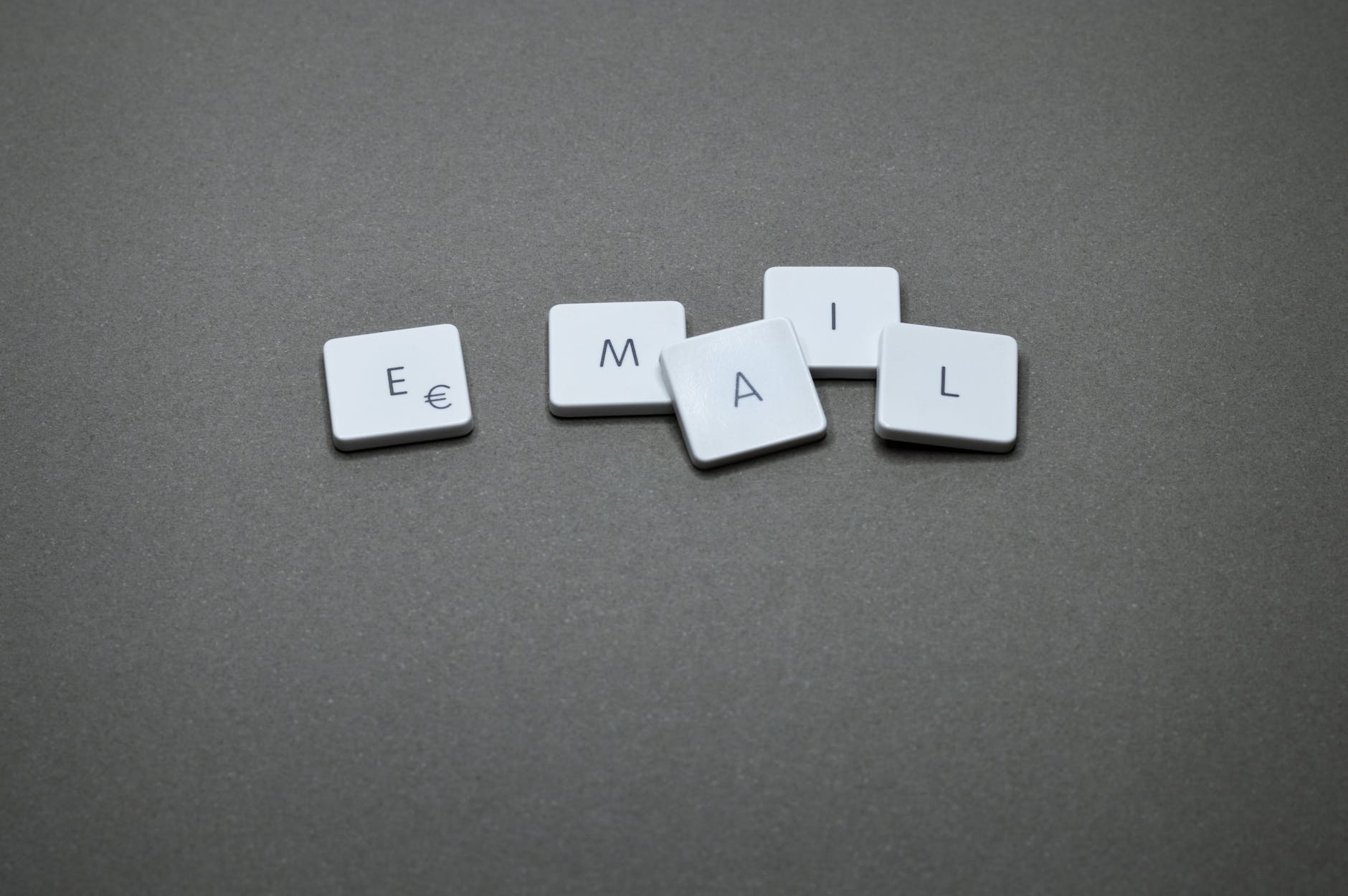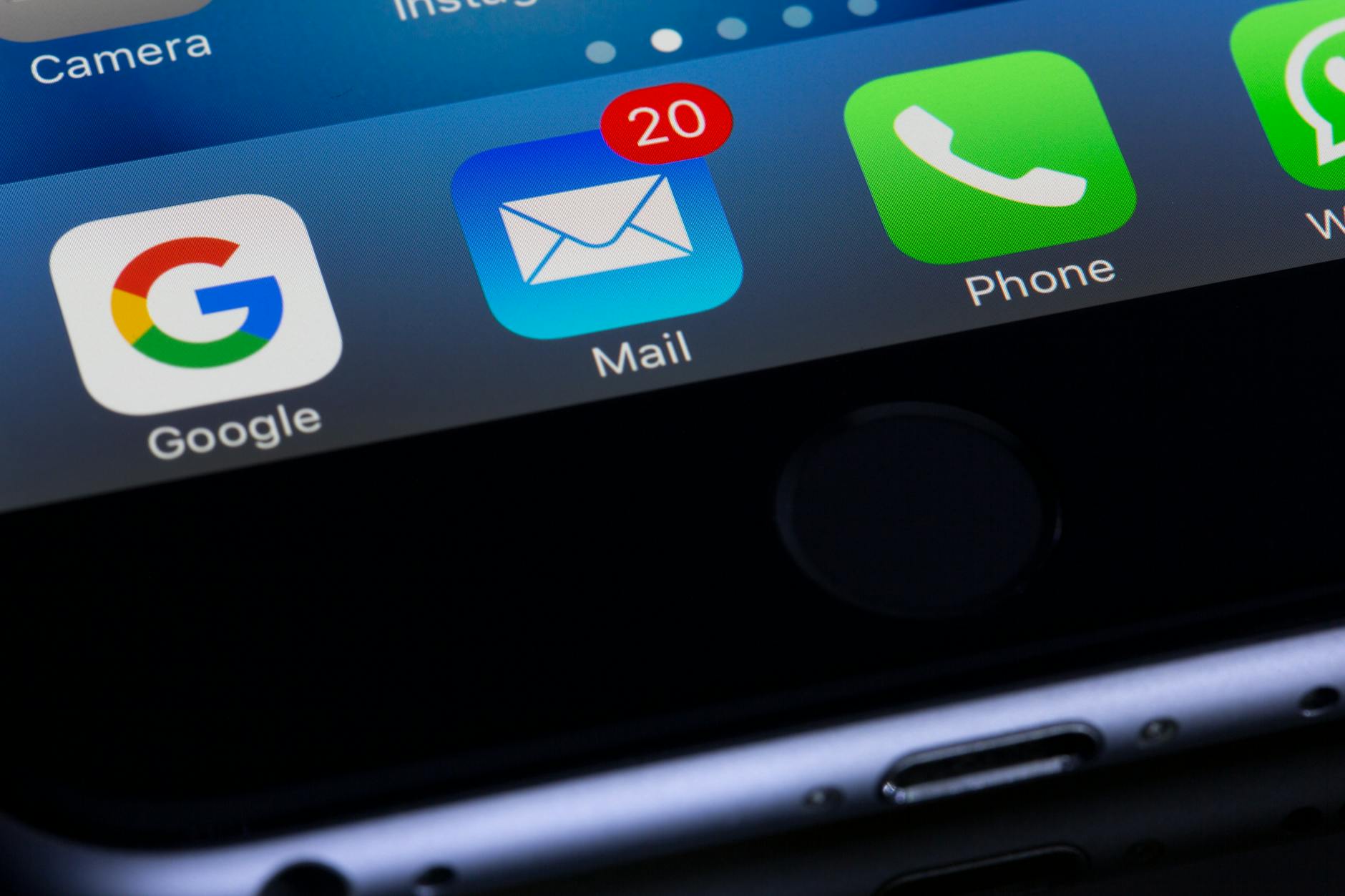Effective Email Etiquette – How to Ensure Your Messages Are Understood
All of us send email every day. However, have you ever considered what makes for an effective email that will be read and understood by the recipient? As a primary means of communication with colleagues and the public, it is important to consider the most effective ways to compose email to ensure it is read fully and understood clearly.

Don’t Send that Email … Unless You Have To!
One of the biggest challenges in effective communication is deciding the medium for the message. For many people, email is a common way to share information. In fact, it is often preferred, as implied by the saying, “this was another meeting that should have been an email.” Yet it does have limits. Here are times when email is appropriate:
- Routine communication: Emails are suitable for routine updates, sharing information, and conveying non-urgent messages. If your message is not time-sensitive and allows for a delayed response, email is a suitable choice.
- Documentation: When you need a written record of communication, such as project updates, agreements, or decisions.
- Scheduling and coordination: For arranging meetings, confirming appointments, and coordinating schedules.
- Formal communication: In professional settings, emails are often appropriate for formal communication, such as job applications, official announcements, and business proposals.
However, there are situations when hitting send on that message would cause trouble:
- Urgent matters: In situations requiring immediate attention or response, consider using a more direct and real-time communication method, such as phone calls or instant messaging.
- Sensitive or confidential information: Avoid sending sensitive or confidential information via email, especially if it involves personal or financial details. Use secure methods or direct communication for such matters. If your message involves emotional or sensitive topics, consider having a face-to-face conversation or using a more personal communication method to avoid misunderstandings.
- Complex issues: For complex or nuanced discussions that may benefit from real-time interaction and clarification, opt for a meeting or a phone call.
- Negative feedback: When providing constructive criticism or negative feedback, it’s often better to deliver it in person or over the phone to ensure clarity and understanding.

Scintillating Subject Lines
A well-crafted subject line is crucial for getting your email noticed and read. To that end, there are simple rules to follow regarding subject lines.
- Be Clear and Specific: Clearly convey the purpose or main topic of your email. Avoid ambiguity to ensure the recipient understands the content. Aim for brevity to make it easy for the recipient to quickly grasp the essence of the email. Most people receive numerous emails, so concise subject lines are more likely to be read.
- Use Action Words: Incorporate action verbs that prompt the recipient to take a specific action or convey a sense of urgency. If there’s a time-sensitive element to your email, mention it in the subject line. However, be honest and avoid overusing urgency, as it can lead to fatigue.
- Personalize When Possible: Include the recipient’s name or reference specific details related to your relationship or previous interactions. Personalization makes email stand out and feel more relevant to the recipient.
- Highlight Benefits or Value: If your email offers value or benefits to the recipient, mention this in the subject line. Conveying the value of the email can increase the likelihood of it being opened.
- Be Mindful of Tone: Match the tone of your subject line to the nature of the email and your relationship with the recipient. Avoid overly formal or informal language unless it aligns with the context. Writing in all caps or using excessive punctuation can make your email appear unprofessional or overly urgent. Use proper capitalization and punctuation for a polished look.
- Consider Mobile Users: Many people check emails on mobile devices, so ensure your subject line is mobile-friendly and not too long.
Remember that am effective one can significantly impact the success of your email communication.
Avoid Enormous Email
Well, there is no hard and fast rule on the maximum length of an email, there are general guidelines based on purpose, content, and preferences of your audience.
- Brevity is Key: Aim to be clear and concise in your communication. Most people appreciate emails that get to the point without unnecessary details. If you have multiple topics to discuss, consider breaking them into separate emails. This helps the recipient to absorb information more easily.
- Use Paragraphs and Bullets: Organize your content into short paragraphs and use bullet points to make the text easy to scan for recipients to grasp the key points quickly.
- Avoid Information Overload: Too much information in a single email can be overwhelming. Focus on the most important details and provide additional information or attachments if needed.
- Effective Use of Hyperlinks: Instead of including lengthy information within the email, use hyperlinks to direct recipients to additional resources or details.
- Closing and Call to Action: Clearly state your closing remarks and any necessary calls to action. Be specific about what you expect from the recipient if any action is required.
- Proofread and Edit: Before sending, review your email for unnecessary information or repetitive content. Edit for clarity and brevity.
Overall short and simple emails are the best way to go for most work-related topics.

To CC or BCC, that is the Question?
Knowing the best uses of CC (Carbon Copy) or BCC (Blind Carbon Copy) in emails is essential for effective communication and maintaining appropriate levels of transparency.
When is it best to CC a recipient?
- For Informational Purposes: CC is commonly used when you want to keep someone in the loop or inform them about the content of the email without requiring their direct action. It allows additional recipients to be aware of the conversation or information exchange.
- When Multiple Parties Need to Be Informed: Use CC when there are multiple individuals or teams that need to be aware of the communication but may not need to actively participate.
- To Keep a Record: CC can be used to keep a record of the communication for someone who may not be directly involved but needs to be aware of the conversation for documentation purposes.
- To Include a Supervisor or Manager: If you are communicating with a colleague and want to keep their supervisor or manager informed, CC can be an appropriate option.
When it is best BCC a recipient?
- For Privacy and Confidentiality: BCC is used when you want to protect the privacy of recipients by concealing their email addresses from others on the list. It is often used in mass emails to protect the privacy of recipients.
- To Avoid Reply All Confusion: If you are sending an email to a large group and want to avoid cluttering inboxes with unnecessary replies, you can use BCC to hide the recipient list.
- When Introducing New Contacts: If you are introducing someone to a group or connecting people who may not know each other, using BCC can maintain privacy while facilitating introductions.
- For Sensitive Matters: When discussing sensitive or confidential matters and ensure that recipients do not see each other’s email addresses, BCC can be a useful tool.
Important Considerations:
- Ethical Use: Use CC and BCC ethically and responsibly. Avoid using BCC to hide information that should be transparent or to deceive recipients.
- Recipient Expectations: Be mindful of recipient expectations. Some people may be sensitive about being CCed on emails, so use discretion.
- Company Policies: Some organizations may have specific policies about the use of CC and BCC. Familiarize yourself with your company’s guidelines.
- Replying and Forwarding: Note that when recipients reply to an email, everyone in the CC list will see the reply. BCC recipients, however, will not be able to see each other’s replies.

Be Mindful of Attachments
Attachments can be the bane of successful email communication. There are various factors to keep in mind to ensure attachments to emails are read.
- File Size: Be mindful of the size of your attachments. Large files can take a long time to upload and download, leading to delays for both you and the recipient. Consider compressing files or using file-sharing services for large attachments.
- Relevance: Only attach files that are relevant to the content of the email. Avoid sending unnecessary or unrelated attachments to prevent confusion and save the recipient’s time.
- File Format: Use common and widely compatible file formats to ensure that the recipient can easily open and view the attachment. PDFs, JPEGs, and Microsoft Office file formats are generally well-supported.
- Use Cloud Services for Large Files: If your attachments are too large for email, consider using cloud storage services (e.g., Google Drive, Dropbox) and share a link to the files instead. This is often more convenient and efficient.
- Indicate Attachments Clearly: Clearly mention in the body of the email that you have attached files. This helps the recipient know what to expect and reduces the chance of overlooked attachments. Use clear and descriptive file names for your attachments. This makes it easier for recipients to understand the content without opening the files.
- Consider Privacy and Security: If the attachments contain sensitive information, consider encrypting them or using secure file-sharing methods to protect the data during transit.
Say What You Mean to Say
Handling tone in emails is crucial to convey your message accurately and prevents misunderstandings. Some basic approaches should help ensure meaning is delivered accurately.
- Be Polite and Courteous: Simple politeness and courtesy go a long way in creating a positive tone. Refrain from using negative or confrontational language. Instead of saying what you “can’t” do, focus on what you “can” do.
- Use Clear and Direct Language: Be clear and concise in your communication. Avoid ambiguity or overly complex sentences that may lead to misinterpretation. Be mindful of your vocabulary. Words carry weight, and choosing the right ones can greatly impact the tone of your message.
- Consider the Recipient’s Perspective: Think about how your words might be perceived by the recipient. Consider their background, culture, and relationship with you.
- Use Emoticons Carefully: Emoticons can help convey tone, but use them judiciously, especially in professional or formal communication.
- Be Mindful of Humor: Humor doesn’t always translate well in written form, and it can be interpreted differently. If you use humor, ensure it’s appropriate for the context and the relationship you have with the recipient.
- Avoid Overusing Capitalization: WRITING IN ALL CAPS CAN BE INTERPRETED AS SHOUTING. Use capitalization sparingly to emphasize specific words or phrases.
- Proofread for Tone: Before sending, review your email to ensure that the tone aligns with your intentions. Misinterpretations often arise from oversight. If you’re unsure about the tone of your email, consider seeking feedback from a colleague or friend before sending it. They may provide valuable insights.
- Address Issues Privately: If you need to address a concern or provide constructive feedback, consider doing so privately rather than in a group email. This can help maintain a positive tone and avoid unnecessary embarrassment.
- Know When to Escalate: If the email conversation becomes tense or if a sensitive topic arises, consider moving the discussion to a more suitable medium, such as a phone call or in-person meeting.
By being conscious of your language choices and the context of your communication, you can convey the intended tone in your emails and foster positive interactions with your recipients.

The Perils of Public Record
Many people forget that emails between and to government employees are a public record. Public records are documents or pieces of information that are made or received by a government agency or official in the course of public business. This means they are subject to transparency, legal requirements, and potential implications.
- Know Your Organization’s Policies: Different organizations and government agencies have specific guidelines for handling and archiving records. Determine whether the content of the email constitutes a public record. Generally, communications related to official business, decisions, or transactions may be considered public records.
- Understand Legal Requirements: Be aware of any local, state, or federal laws that govern public records. These laws may outline the types of records that must be retained, the duration of retention, and the process for making records available to the public.
- Use Official Email Accounts: When conducting official business, use official email accounts provided by your organization. This helps establish a clear distinction between personal and professional communications. Refrain from including personal or sensitive information in emails that may be treated as public records. Keep discussions focused on official business.
- Be Mindful of Tone and Language: Use professional and respectful language in your emails. Remember that these communications may become part of the public record and reflect on your organization.
- Include Sufficient Details: Ensure that your emails provide sufficient details and context for future reference. This helps anyone accessing the public record to understand the content and purpose of the communication.
- Be Cautious with Attachments: Consider the content of any attachments. Attachments, like documents and images, may also be subject to public records laws.
- Use BCC and CC Wisely: Be cautious when using BCC (Blind Carbon Copy) or CC (Carbon Copy), especially if including external parties. Understand that their email addresses may become part of the public record.
- Consult Legal or Compliance Experts: If you have questions or concerns about whether an email should be treated as a public record, seek guidance from legal or compliance experts within your organization.
Understanding the implications of public records laws and adhering to your organization’s policies is essential when sending emails related to official business. Taking a proactive approach to compliance can help avoid legal issues and maintain transparency in government or organizational operations.
Texting like the Cool Kids!
When conducting business through text, many of the best practices highlighted above are applicable. In fact, texting many be preferable to an email in some cases.
Choosing between text messaging and email depends on the nature of your message, the level of urgency, and the relationship with the recipient. Below are scenarios where texting may be more appropriate than sending an email.
- Urgency: Texting: If your message is time-sensitive and requires immediate attention, such as a quick update, change of plans, or an urgent request. Text messages are often read promptly, making them suitable for more immediate communication.
- Brief Communication: Texting: For short and concise messages that don’t require a formal email format. Texting is more suitable for quick exchanges and brief updates with friends, family, or colleagues, especially when a formal email might be seen as unnecessary.
- Personal Matters: Texting: When dealing with personal matters or social plans, texting is often more appropriate and quicker than composing an email.
- Accessibility: Texting: If you know the recipient is more likely to check their text messages than their email, especially in certain professional or social settings.
- Personal Reminders: For sending personal reminders or quick notes to individuals without the need for a formal email.
However, it’s important to note that context and individual preferences play a significant role. In professional settings or for formal communication, email may still be the preferred method.
Additionally, be aware of privacy considerations and the fact that text messages may not be as secure as email in certain situations. Always consider the nature of the message and the preferences of the recipient when choosing between texting and email. Finally, remember that texts are also subject to public record laws.
